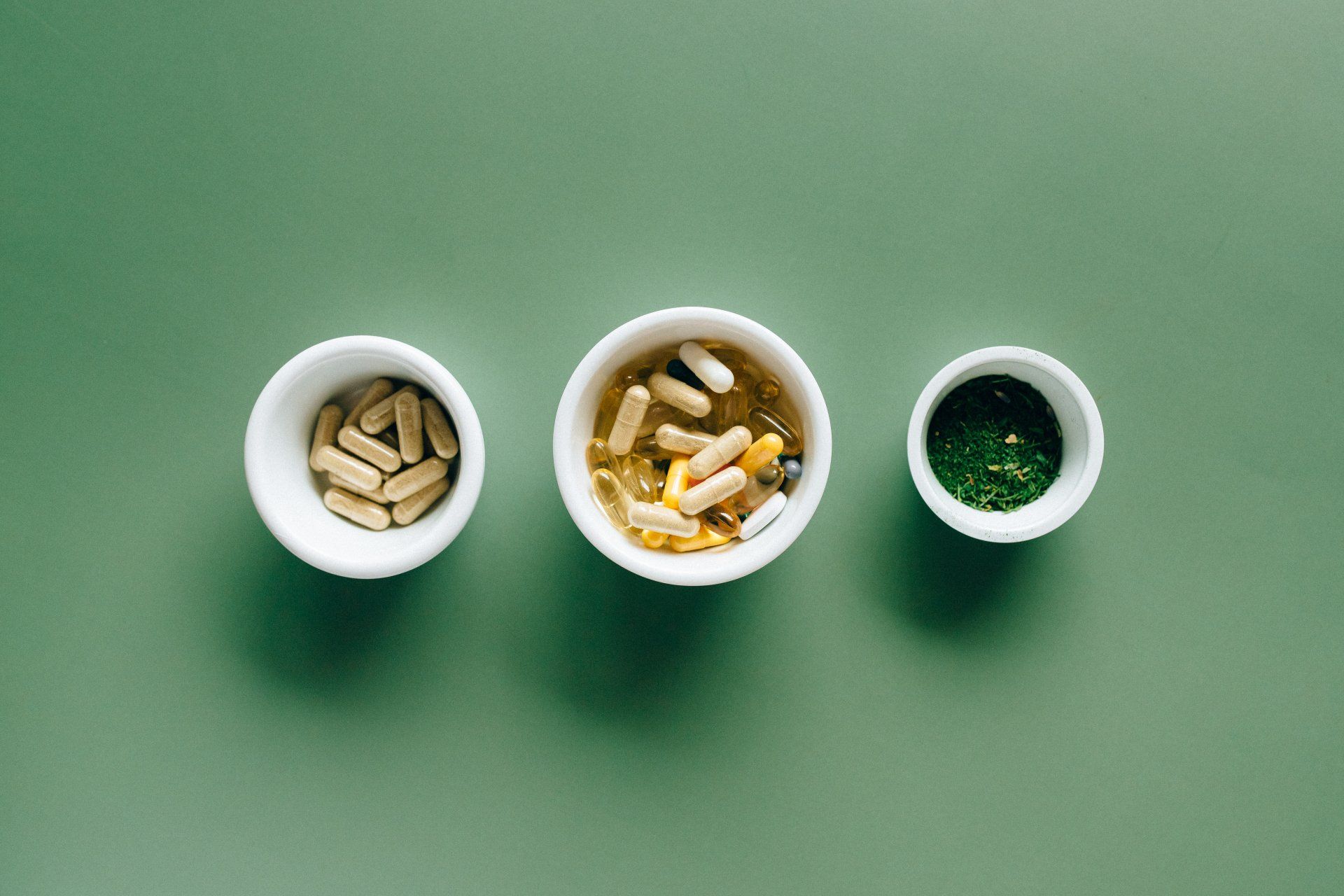7 Superfoods that Improve your Immune System
7 Superfoods that Improve your Immune System
written by Marvellous Olayinka

Your body is repeatedly exposed to various harmful organisms, such as bacteria, viruses, and fungi, daily.
Your immune system serves as a barrier that protects your body from the impact of these harmful organisms.
How important is your diet for your immune system?
Your immune system is a complex network of cells (like white blood cells), tissues, organs, proteins, and chemical substances.
The cells of your immune system fight against harmful organisms systematically.
- They identify whether an organism is harmful or not.
- They destroy the organisms.
- They reactivate more quickly and effectively when they re-encounter the same organism later.
The immune system can become compromised when an adequate and healthy diet is neglected.
Nutrition plays an essential role in maintaining a healthy immune system by
- Making certain proteins, such as antibodies.
- Helping make new cells.
- Regulating immune cell metabolism.
- Protecting the body from oxidative stress and free radical build-up.
- Supporting and strengthening the body's normal intestinal bacteria, which in turn strengthens the immune system.
A sure-fire way to amp up your immunity is by eating foods rich in certain nutrients like:
- Zinc
- selenium
- Iron
- Magnesium
- Copper
- Folate
- Vitamin A
- Vitamin B
- Vitamin C
- Vitamin D
- Vitamin E
Now you might be wondering what types of foods are excellent for your immune system.
Here are seven superfoods to skyrocket your immunity:
Yogurts
Known for their soft, smooth, and creamy texture and sweet or sour taste (depending on the flavor), yogurts are a staple rich in calcium, protein, and probiotics.
Probiotics in yogurts improve gut health and immunity by increasing immune cell production and stopping infectious agent growth, including a host of harmful bacteria.
A study was conducted on athletes to determine the effects of probiotics in eliminating cell damage. Researchers discovered that, due to the nature of athletes' intense physical activity, they are more prone to upper respiratory tract infections and digestive problems, particularly diarrhea. However, upon consuming foods rich in probiotics, respiratory infections and digestive issues were significantly reduced.
Another study demonstrated that eating yogurts daily can reduce the likelihood of vaginal yeast infections in women.
Dark chocolate
"Wrapped in shiny wrappers,
golden, red, silver, and brown,
chocolate, the king of sweets,
everyone's favorite treat,
drop it in your mouth,
it slips and melts,
bittersweet with nuts,
lover's gift, chocolate kiss!"
Most people who relate to the above poem by Reshma Ramesh can attest to the goodness of chocolates. Still, other than dark chocolate's reputation for being the king of sweets, dark chocolate is packed with powerful antioxidants and anti-inflammatory agents, including flavanols, catechins, and polyphenols.
Antioxidants protect the body and its immune system against free radicals, which are notorious for causing cancer, chronic health problems, and aging.
A recent study involving five healthy adults aged 25-50 asked the participants to eat 48 grams of dark chocolate daily for eight days. Blood samples were drawn from each participant before and after the experiment. The blood samples were analyzed to determine how dark chocolate consumption impacts gene expression and immune system function. The participants demonstrated an increase in gene expression, which promotes the activation of white blood cells, which help ward off infections and diseases.
Also, new evidence is emerging about the role of dark chocolate in fighting off colds and reducing cough due to theobromine, an antioxidant found in high concentrations in dark chocolates.
Sweet Potatoes
Sweet potatoes contain 77% water,20% carbohydrates,1.6% protein, and 3% fiber. Also, sweet potatoes are an excellent source of beta-carotene (a provitamin), which is then converted to vitamin A upon digestion.
The various compounds that make up sweet potatoes boost the immune system by preventing inflammation and cellular damage caused by free radicals.
The fiber content of sweet potatoes aids constipation and contributes to maintaining a healthy gut since 80% of the immune system occupies the gut.
A study carried out on infants in their first year found that infants that regularly consume the right portion of high-fiber foods, like certain fruits and vegetables, demonstrated increased levels of fecal butyrate, which indicates a reduced propensity to develop allergies and asthma later in life.
Green Tea
Green tea's ability to strengthen the immune system can be attributed to EGCC(epigallocatechin), a powerful antioxidant in green tea leaves.
The reason why green tea trumps other teas can be attributed to the way green tea is processed. Camellia Sinensis (green tea) leaves undergo a steam-dry process for a short period and at a regulated temperature to prevent the fermentation of essential compounds, which makes green tea a rich source of antioxidants.
During the wake of the COVID-19 pandemic, many researchers experimented with the idea that green tea may suffice as a broad-spectrum therapeutic agent due to the presence of polyphenols in green tea and the lack of cytotoxic effects compared to other drugs, which makes green tea polyphenols a promising antiviral agent.
Green leafy vegetables
Top on the list of foods that boost the immune system are green leafy vegetables.
Broccoli, kale, cabbage, spinach, lettuce, arugula, etc., belong to a family of green leafy vegetables called" cruciferous vegetables."
Cruciferous vegetables are notable for their role in preventing certain diseases, including cancers, due to nutrients like vitamin C, vitamin E, vitamin K, folate, and minerals.
A 2018 study published in the international journal of cancer examined a group of women aged 27-59 years and observed that frequent consumption of cruciferous vegetables is associated with reduced breast cancer risk.
In addition to cancer prevention, green leafy vegetables are also great sources of folic acid, which is responsible for the production and maturation of healthy red blood cells.
Poultry
Consumption of poultry foods like chicken, turkey, and eggs provides you with a daily required amount of protein and vitamin B6.
Vitamin B6 is best known for its role in brain development and the production of antibodies for immune function.
Among the many health-promoting benefits of poultry foods, chief among them is the healing power of chicken soup, which is an excellent source of zinc, magnesium, and antioxidants.
Chicken soup has been lauded as a cure for colds for centuries because of a compound called carnosine, which relieves congestion, the stuffy feeling in your nose and throat. Studies have shown that carnosine cures a cold by reducing inflammation in the upper respiratory tract by stopping the migration of neutrophils, a component of the white blood cells, which contributes to your body's inflammatory response.
Eggs also strengthen your immune system because of vitamin A, vitamin E, selenium, and antioxidants. The major antioxidants found in eggs are lutein and zeaxanthin, which plays a role in reducing certain eye diseases, including cataracts, etc.
Nuts and Seeds
There's a lot to love about nuts and seeds. Options like: almonds, Brazil nuts, pecans, walnuts, cashew nuts, hazelnuts, flax seeds, pumpkin seeds, chia seeds, etc., just to name a few, are excellent immune system boosters.
Nuts and seeds are rich sources of fiber, protein, iron, and omega-3 fatty acids.
Research has shown that when consumed with vitamin C-rich foods, such as tomatoes, seeds and nuts help to reduce the likelihood of diabetes and heart diseases and also help maintain a healthy weight.
While it's true that nuts have a high percentage of total fats, spanning from 46% in cashew nuts to 76% in macadamia nuts. The total fat content in most nuts is chiefly attributed to monounsaturated fatty acids, best known as healthy fats, which help reduce low-density lipoprotein (LDL) cholesterol in the body.
Final takeaway:
Living healthy should be at the forefront of your mind at all times, and one of the ways to achieve this is by maintaining an optimal immune status.
A list of immune-boosting foods to help you get started has been discussed above. Be intentional about incorporating these superfoods into your daily diet. When unsure about your immune status, consult your healthcare provider for clarification and further medical advice.
References:
Berk, L., Bruhjell, K., Peters, W., Bastian, P., Lohman, E., Bains, G., Arevalo, J., & Cole, S. (2018). Dark chocolate (70% cacao) affects human gene expression: Cacao regulates cellular immune response, neural signaling, and sensory perception. The FASEB Journal, 32(S1). https://doi.org/10.1096/fasebj.2018.32.1_supplement.755.1
Calder, P. C. (n.d.). The immune system: a target for functional foods? | British Journal of Nutrition. Cambridge Core. https://www.cambridge.org/core/journals/british-journal-of-nutrition/article/immune-system-a-target-for-functional-foods/F78BF5CD910E58626D1AF79B47EFCBE9
Lollo, P. C. B., de Moura, C. S., Morato, P. N., Cruz, A. G., Castro, W. D. F., Betim, C. B., Nisishima, L., Faria, J. D. A. F., Maróstica, M., Fernandes, C. O., & Amaya-Farfan, J. (2013). Probiotic yogurt offers higher immune protection than probiotic whey beverages. Food Research International, 54(1), 118–124. https://doi.org/10.1016/j.foodres.2013.06.003
Van de Water, J., Keen, C. L., & Gershwin, M. E. (1999). The Influence of Chronic Yogurt Consumption on Immunity. The Journal of Nutrition, 129(7), 1492S-1495S. https://doi.org/10.1093/jn/129.7.1492s
Marvellous Olayinka is a freelance content writer who specializes in health and wellness. She is also currently training to be a medical doctor. You can connect with her on LinkedIn or check out her health blog, where she shares informative tips on healthy living.
Thank you for reading Patient Education Essentials, the Write Shift RN blog.
Disclaimer: This article was written as a guest post for Write Shift RN LLC's blog. The information in it may not be wholly fact-checked or edited, allowing the reader to see the writer's work and skills firsthand. This information is not intended as medical advice. It is for informational and educational purposes only. Always talk to your doctor or other qualified healthcare providers about any questions or concerns you may have regarding medical conditions.











